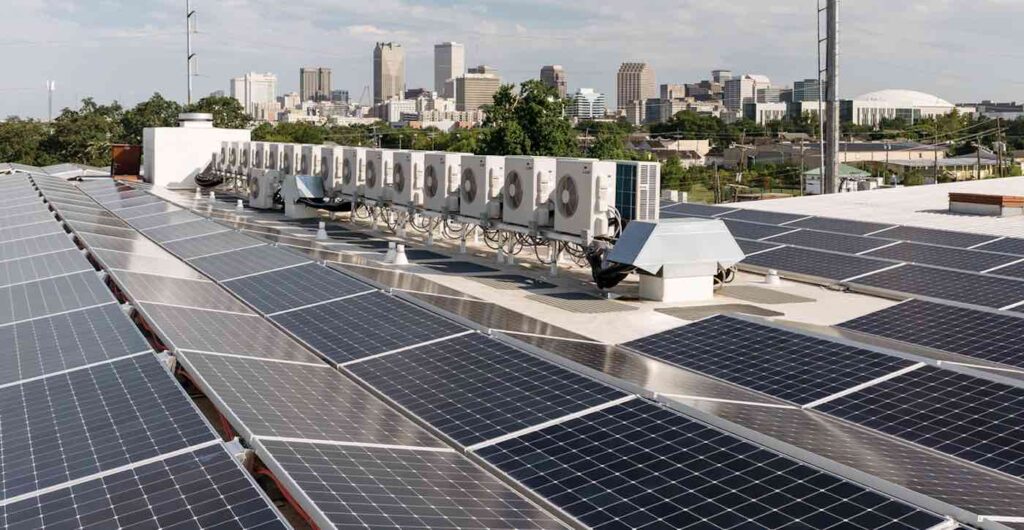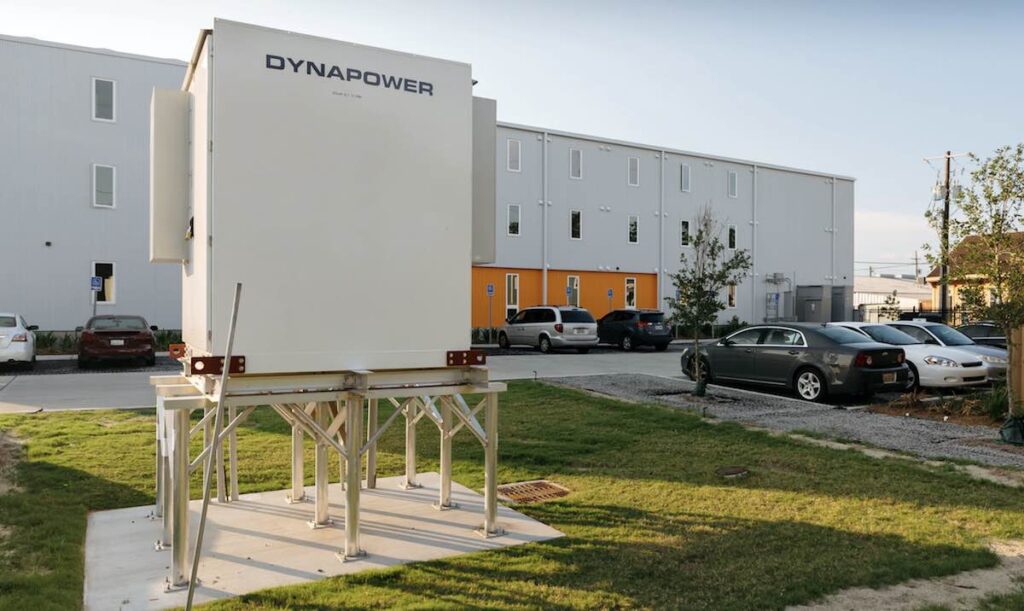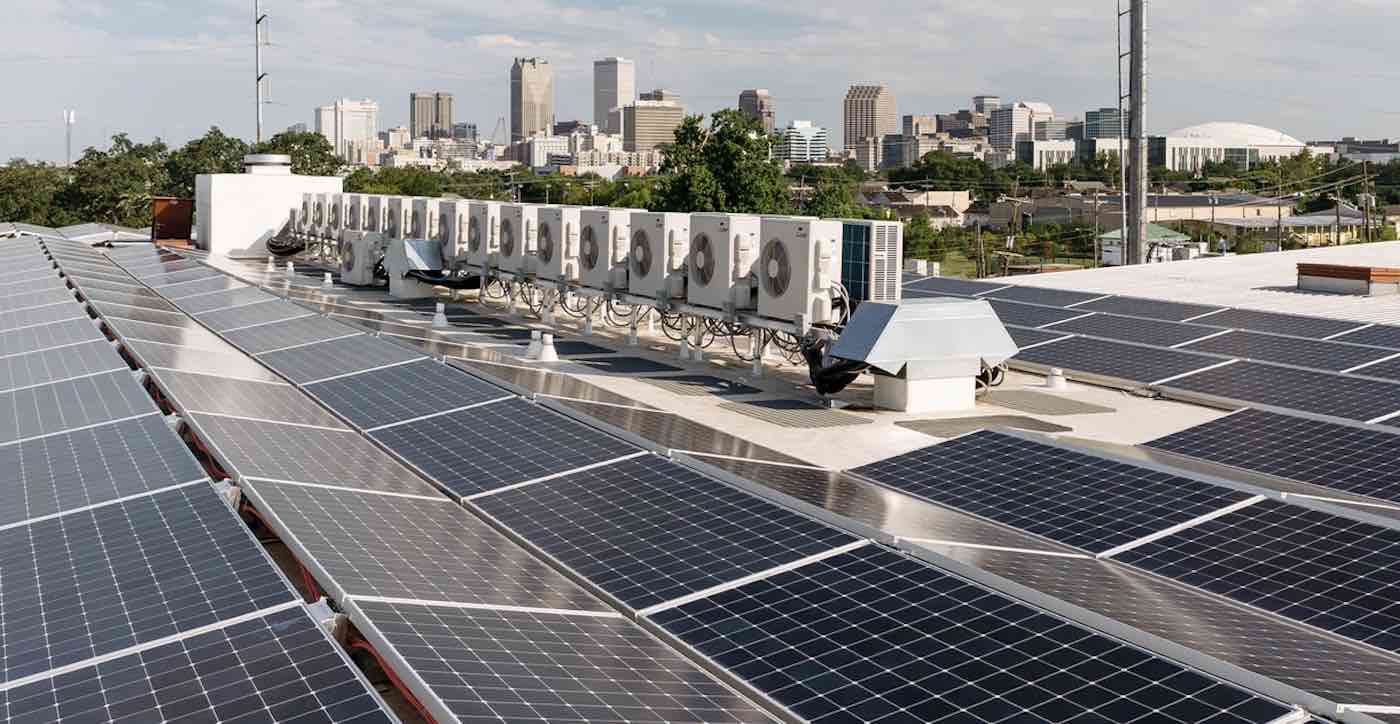Another hurricane, another power outage? In the state of Louisiana, one apartment complex is keeping the lights on—a beacon of hope in New Orleans.

St. Peter Residential, which opened one month before the pandemic began, built in that emergency functionality using an 8-hour solar battery and a panel array on its roof—and it kept the units running after Hurricane Ida made landfall.
At $7.4 million, the 45,000 square foot building is the first net-zero emission apartment complex in the state, meaning it offsets or removes as much power as it generates onsite. Designed as “a calming oasis intent on building community in a dense urban environment,” the 50-unit, mixed-income living spaces are served by a microgrid of 450 solar panels that generate electricity on demand, and stored excess power in a battery located in the parking lot.
St. Peter was designed to cultivate a community (with the inclusion of a wellness center for yoga and meditation and common event and outdoor spaces), and importantly, half of the 50 units—29 affordable apartments and 21 market-rate units—are reserved for veterans.
The microgrid has now seen three storms: Hurricane Zeta which took out power in the area last October, Winter Storm Uri which resulted in the same thing, and now Hurricane Ida.
Lauren Avioli is the director of housing development for the nonprofit SBP, which oversaw the funding and construction of St. Peter.
SBP, named after St. Bernard Project, was founded by Zack Rosenburg and Liz McCartney after the couple (now married) volunteered in the St. Bernard parish following the devastation wrought by Hurricane Katrina. Since then, SBP has rebuilt homes for more than 2,000 families and hired Eskew+Dumez+Ripple as the architect to design this innovative complex that provides residents with extremely low energy bills.
POPULAR: Tens of Millions Now Have Power Thanks to Off-Grid Solar Systems –Many of Them Recycled
“It’s not just post-disaster emergency power,” Avioli told Fast Company magazine. “It’s also helping people at the property save money on a blue sky day because we can use some of the energy that’s being generated by the solar panels to run the building.”

It doesn’t work all the time, however. For example, on Tuesday when the power went off it was cloudy, and the system couldn’t deliver as much electricity as the building managers would have hoped for.
But the days after were sunny and powerless in New Orleans, except for St. Peter’s tenants, many of whom have transitioned from lower-income housing, or even from homelessness.
SBP believes it’s a no-brainer as far as city planning goes, to place these resilient solar microgrids on as many rooftops as possible—especially if, as some scientists’ believe, global climate change is making storms like Ida hit harder and more often than normal.
Cities would not only be doing their best to keep the power on, but to mitigate their share of emissions going up into the atmosphere.
The St. Peter project is a shining example of how developers and cities can commit to helping find solutions to eradicating both poverty and climate change emissions that are exacerbating such storms.
SHARE The Sunny News About Innovation in America on Social Media…




















